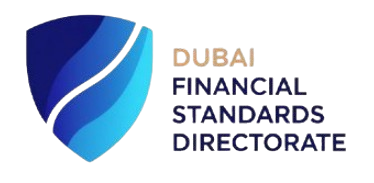DFSD's Legal Framework
Article 121 of the UAE Constitution enabled the Federation to create Financial Free Zones in the
Emirates, and most importantly, to exclude the application of certain Federal laws in these
Financial Free Zones. A number of laws created the DIFC and the necessary centre bodies, which
include the DFSD. These laws set out the objectives, powers and functions of the centre bodies. They
also contain important exemptions and prohibitions in the DIFC.
Federal Law No. 8 of 2004
Federal Law No. 8 of 2004 on “The Financial Free Zones in the United Arab Emirates” (the Financial
Free Zone Law) mainly:
- Allows the creation of a Financial Free Zone in any Emirate of the UAE, by a Federal Decree
- Exempts the Financial Free Zones and the Financial Activities from all Federal civil and
commercial laws
- Confirms the application of Federal criminal laws in the Financial Free Zones, including the
Federal Laws on Anti-Money Laundering
- Prohibits DIFC authorised firms from dealing in “deposit taking from the State’s markets […]
[and] in the UAE Dirham”
- Restricts DIFC authorised insurers’ dealings in the State to carrying out re-insurance
activities
This means that the DIFC would mostly have its own regulatory and legal framework.
Federal Decree No. 35 of 2004
Federal Decree No. 35 of 2004 created the DIFC as a Financial Free Zone in Dubai (the DIFC Law). The
Federal Cabinet also made two Cabinet Resolutions that:
- Set out the geographic boundaries of the DIFC
- Allow the centre bodies and authorised firms to operate outside the DIFC for the first four
years because the DIFC was still under construction
Dubai Law No. 5 of 2021
Dubai Law No. 9 of 2004 on “The Establishment of the Dubai International Financial Centre,” was
subsequently replaced by Dubai Law No. 5 of 2021. It acknowledges the creation of the DIFC and:
- Recognises the financial and administrative independence of the DIFC
- Creates the DIFC centre bodies, which include the DFSD
- Provides for the DFSD to operate independently from other DIFC centre bodies
- Exempts the DIFC from Dubai laws and regulations, under certain conditions.
DIFC Law No. 1 of 2004
DIFC Law No. 1 of 2004 or the “Regulatory Law 2004” is the cornerstone of the DFSD’s regulatory
powers, functions and objectives:
- Gives the DFSD the power to make Rules
- Sets out the powers and functions of the Board and the Chief Executive
- Establishes the Financial Markets Tribunal
- Sets out the criteria and process for authorising firms and individuals
- Sets out the powers for supervising and investigating Persons as well as the enforcement of
DFSD-administered legislations
- Gives the DFSD the power to impose restrictions, suspensions and sanctions, including financial
penalties
- Sets out various disclosure requirements to the DFSD
- Sets out the decision making process that the DFSD must follow to issue certain types of
decisions
Cabinet Resolution No. 28 of 2007
Cabinet Resolution No. 28 of 2007 on “Implementing Federal Law No. 8 of of 2004 on Financial Free
Zones” further detailed certain provisions of the Financial Free Zones Law.
*a DFSD translation.1a consolidated DFSD translation.

